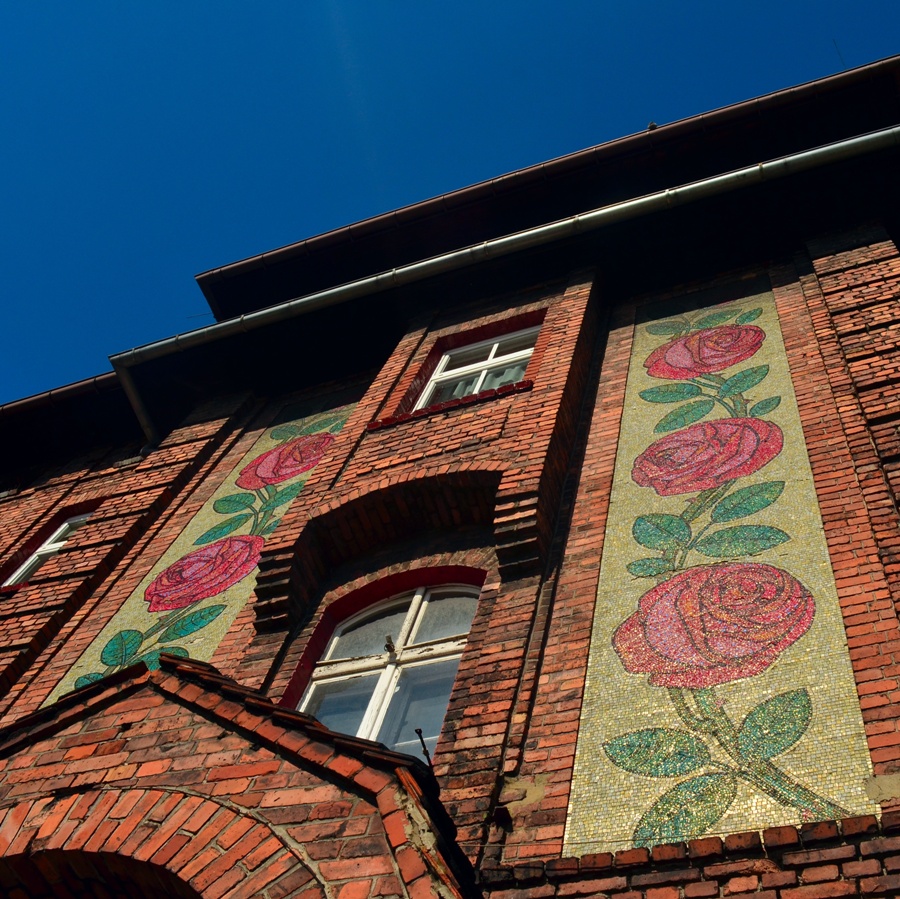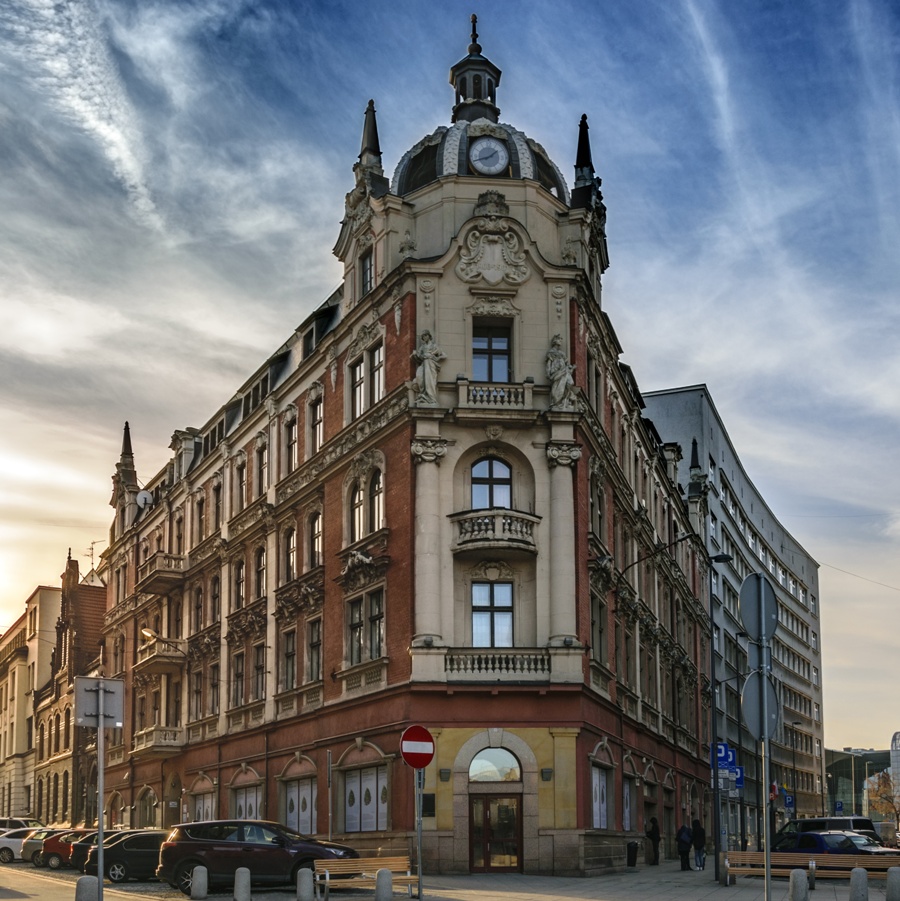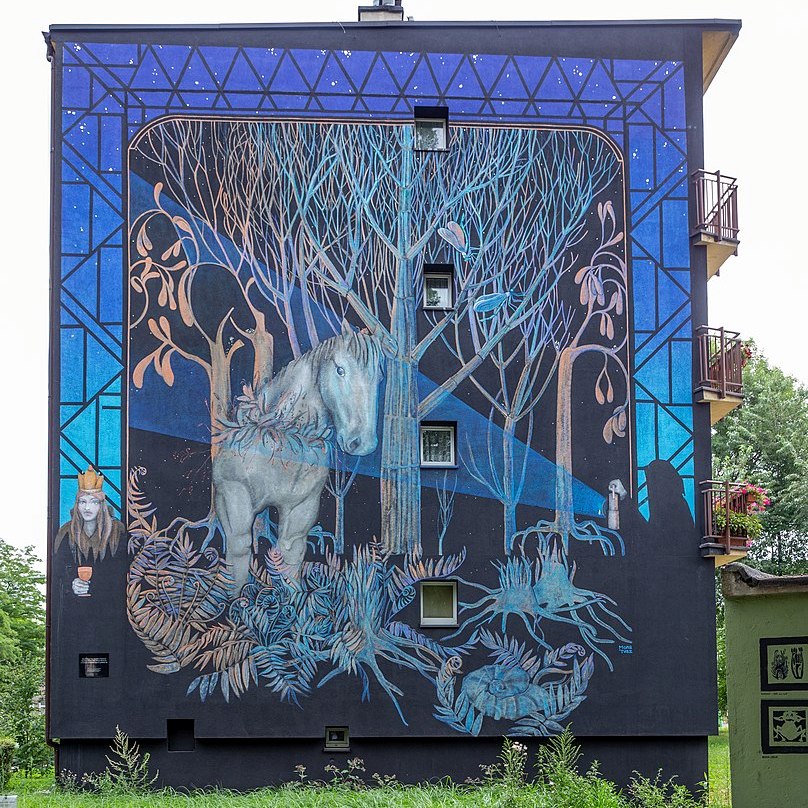Home » Katowice – Host city » History and Architecture
History
&Architecture
Discover the history and explore the architecture of Katowice.

The former workers’ district of Nikiszowiec | Photo: The University of Silesia material
History
Although brief compared to other cities, the history of Katowice is complicated and rife with hardships. Katowice gained city status in 1865 thanks to the industry flourishing in the region and the established Upper Silesia Railway. Brimming with mineral deposits, the city was developing rapidly with new mines and steelworks being built; this—in turn—resulted in attracting more and more people. In the 19th century, the city was home to multi-cultural and multi-faith societies.

The Silesian Insurgents’ Monument in Katowice | Photo by Agnieszka Szymala
Katowice’s geographical location between Germany and Poland has had a dramatic impact on the history of Upper Silesia and the city itself. In October 1921, following the outbreak of three Silesian uprisings (1919-1921) and a tumultuous plebiscite held among the population, it was decided that the region should be separated from Germany, and the entire present-day area of Katowice was received by Poland.
The following years turned out to be hard for Katowice. The entire Upper Silesia was annexed by Nazi Germany during World War II, and Katowice became the capital of the province. Although the war losses were not significant compared to other Polish cities, they were severe. Insurgent monuments were destroyed, the Great Synagogue on ul. Mickiewicza was burned, and the headquarters of the Silesian Museum in Katowice were demolished.
The city once again became the capital of the Silesian Voivodeship after the war ended. Nevertheless, the Polish People’s Republic functioned as a satellite state, i.e. formally independent but under heavy control of the USSR; consequently, a communist system was imposed on Poland. The new political system was reflected even in the very name of Katowice. After Joseph Stalin’s death on 5 March 1953, Katowice was renamed Stalinogród in honour of Stalin, and so was the Katowice Voivodeship, which became the Stalinogród Voivodeship. Even though the name was in effect for no more than three years, people born between 1953 and 1956 still have Stalinogród written on their birth certificates.
During the Polish People’s Republic age, Katowice continued to thrive and prosper economically, being one of Poland’s major coal suppliers. The most tragic date in this part of Katowice’s history is 16 December 1981; it was then the massacre of striking miners at the KWK Wujek Coal Mine took place, with nine miners killed. The strike was a form of protest against the introduction of martial law in Poland by the Republic’s authorities, which was unconstitutional and violated the citizens’ rights.
Katowice today
The years of systemic transformation taking place in the late 1980s and early 1990s threw down a particular challenge for Katowice’s industry. Introducing the premise of a free market influenced the decision to close many mines and industrial plants. Growing environmental awareness additionally influenced changes regarding the city’s operation in the new reality. Afterwards, the flourishing of cultural institutions, fostered by Katowice’s efforts for the title of the European Capital of Culture 2016, the opportunities for international collaborations thanks to EU projects, the improvements to higher education and booming business contributed to the city’s contemporary appearance.Being perceived as a poster child for urban renewal, Katowice was chosen to host the UN Climate Summit – COP24 in December 2018. During the event, an agreement was made that outlined the procedures and mechanisms necessary to implement the Paris Agreement. Today, Katowice is an important cultural, educational, business and political centre not only on the map of Poland but also the entire Europe.
Architecture
Katowice is a diverse city in terms of its architecture, and its rich history is reflected in the buildings Exploring the attractive sights and nooks and crannies can be a great way to spend time in the city.
At the entrance to Katowice, the incomers’ attention is caught by modern tower blocks, giving the impression of a large and thriving city. Among more typical skyscrapers such as the ‘Altus’ located on ul. Uniwersytecka (near the University of Silesia campus), stands out a modern office complex called ‘KTW’ located at al. W. Roździeńskiego 1, in the beating heart of the city. Finished in 2022, the complex is the tallest office building in the Metropolis GZM. It is not fascinating by its height, however. The two buildings take the shape of cuboids shifted relative to each other, with ‘KTW I’ featuring two and ‘KTW II’ three cuboids. They look as if they are made of Lego blocks jutted out to the sides, giving the illusion of movement.

SPODEK Arena | Photo by MCK/SPODEK
The true symbol of Katowice is located right by the ‘KTW’ complex – the Spodek Arena. The building takes the shape of a flying saucer and has been the most visited and photographed in Katowice since its opening in 1971. It has been a cultural and sports centre, being a venue for many international sporting events, concerts and shows.
The Spodek Arena is not the only intriguing object representing the Silesian architecture of the late 20th century. Just a several-minute walk away, a housing estate dubbed ‘Gwiazdy’ [Stars] towers over Katowice, owing its name to the peculiar shape of all the buildings: an 8-pointed star. The appearance of Katowice was heavily influenced by two respected architects, Jurand Jarecki and Stanisław Kwaśniewicz. Jarecki designed the edifices of two department stores located in close proximity. One of them—called ‘Zenit’, opened in 1962—was the first in the region building with an escalator and horizontal bands of windows characteristic of moderne architecture. The needs of the growing urban area exceeded any expectations; thus, a new and much bigger store called ‘Skarbek’ was built over a decade later. Its modern design was to bring Katowice closer to the West, especially since parts of the exterior had been imported from France. Stanisław Kwaśniewicz, in turn, was responsible for designing residential buildings, e.g. the entire Paderewski housing estate and a residential skyscraper ‘Ślizgowiec’; both constructions stood out in the 1970s and 1980s by their modern form.

The former workers’ district of Nikiszowiec | Photo: The University of Silesia material
Nikiszowiec district
Enthusiasts of historical sites should definitely visit one of Katowice’s districts called Nikiszowiec, where you can marvel at the historic miners’ housing estate. Built between 1909-1919, the estate has preserved its original layout and is a unique example of functionalist architecture from the early 20th century. These rather low-rise masonry structures with characteristic red window shutters used to be a dominant part of the Silesian urban landscape, all the more worthwhile seeing them in their original shape.

Tenement house at 2 Młyńska Street in Katowice | Photo: The University of Silesia material
Moderne Trails
Apart from the architectural aspects, Katowice offers two delightful walking trails. The Moderne Trail is marked along 17 buildings, bringing the wayfarers closer to the modern architecture during the interwar period, which are landmarks of the Upper Silesia capital city. Those who decide to follow the trail may marvel at unique buildings from the 1920s and 1930s, which are a monument to the history and beauty of Katowice. You can find more about the trail at https://moderna.katowice.eu/.
Murals Trails
The other walk leads along the Murals Trail. Street art is a valuable part of the local art, and the city features nearly 70 large-format murals. For many years, the capital of Upper Silesia organised the Katowice Street Art Festival. Nowadays, many notable street artists operate in the city, e.g. Raspazjan or Mona Tusz, whose works can be admired along the Murals Trail.



